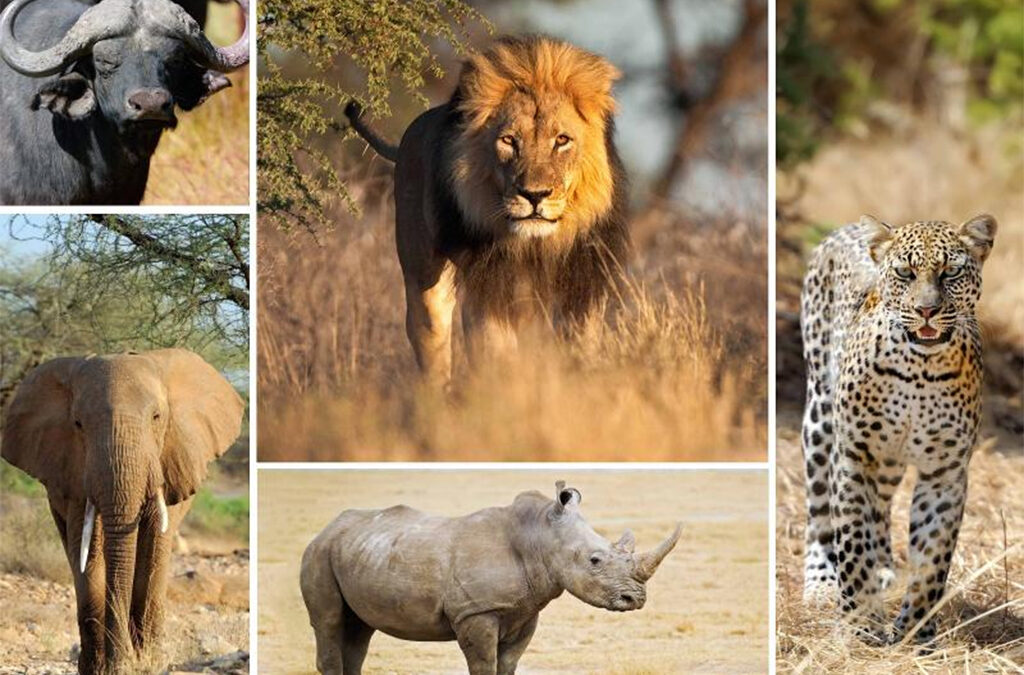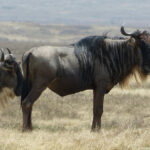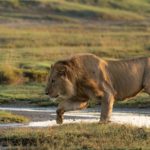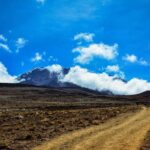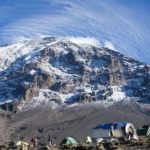Have you ever wondered where you can witness the majestic lions, towering elephants, and more of Africa’s iconic wildlife in their natural habitat? Tanzania offers extraordinary safari experiences that bring you face-to-face with the Big Five. From the sprawling Serengeti plains to the lush Ngorongoro Crater, the possibilities for unforgettable encounters with these amazing creatures are endless.
The term “Big Five” originally referred to the five most difficult animals to hunt on foot, but today it stands for the ultimate African safari experience. Tanzania is home to some of the largest populations of these species, making it a top destination for wildlife enthusiasts. In fact, Tanzania’s Serengeti National Park alone holds over 3,000 lions, providing ample opportunities for spotting these magnificent predators in action.
![]()
The Big Five Safari: Where to See Lions, Elephants and More in Tanzania
For a thrilling adventure, Tanzania is the prime location to see the Big Five: lions, elephants, buffaloes, leopards, and rhinos. The Serengeti National Park, with its vast savannas, is home to large prides of lions. You can also find elephants wandering through the stunning landscapes of Tarangire National Park. Each park offers unique opportunities for wildlife enthusiasts and photographers alike. Seeing these majestic animals in their natural habitat is a once-in-a-lifetime experience.
Ngorongoro Conservation Area is renowned for its high density of wildlife, including large herds of elephants and buffaloes. The Ngorongoro Crater is a UNESCO World Heritage Site and provides a unique microcosm of varied species, including the elusive leopard. Taking a guided tour can increase your chances of spotting all of the Big Five in one location. Additionally, the crater’s setting allows for spectacular views and diverse photographic opportunities. This area makes for a memorable part of any Tanzanian safari.
Selous Game Reserve, one of the largest wildlife reserves in Africa, offers an incredible variety of habitats. From lush wetlands to expansive woodlands, it houses an impressive range of wildlife such as lions and rhinos. Visitors can embark on boat safaris or walking tours, guided by experienced local experts. These tours provide a closer look at the flora and fauna of the region. The diverse ecosystem supports a thriving population of all the Big Five.
For those interested in off-the-beaten-path adventures, Ruaha National Park is a hidden gem. It’s less crowded but no less impressive in terms of wildlife. The park is known for its large herds of elephants and prides of lions. Visitors can take guided game drives through the park’s scenic routes. Ruaha offers a peaceful yet exhilarating safari experience, away from the more frequented parks.
Best National Parks and Reserves for Big Five Sightings
Serengeti National Park is one of the most famous spots for Big Five sightings. It’s renowned for its annual migration of over 1.5 million wildebeests and countless zebras. The park’s vast plains provide ample space for predators like lions and leopards. Elephants and buffaloes can often be seen near water sources. Visitors will likely spot these majestic animals during a game drive.
Ngorongoro Conservation Area, and especially the Ngorongoro Crater within it, offers an extraordinary wildlife experience. The crater acts as a natural enclosure, making it easier to see the Big Five. Rhinos, in particular, are frequently spotted grazing in the lush crater floor. The area also offers opportunities for walking safaris, adding a thrilling dimension to your visit. Every corner of this unique conservation area teems with vibrant animal life.
Selous Game Reserve in southern Tanzania is another excellent destination for those seeking the Big Five. Known for its diverse landscape featuring rivers, lakes, and savannas, Selous is perfect for boat and walking safaris. The reserve is home to significant populations of lions, elephants, and buffaloes. Leopard sightings are common during guided tours. The reserve’s expansive and varied terrain makes it a must-visit.
Last but not least, Tarangire National Park is a hidden gem that should not be overlooked. The park is most famous for its large elephant population and ancient baobab trees. Visitors can often see lions and buffaloes roaming the park. The park’s swamps, which attract various bird species, also support high wildlife diversity. Tarangire offers an enchanting yet less crowded safari experience.
Wildlife Conservation Efforts in Tanzania by Rolux Safaris
Rolux Safaris is deeply committed to wildlife conservation efforts in Tanzania. They actively work with local communities to promote sustainable tourism. Their initiatives include anti-poaching measures and wildlife monitoring programs. Rolux Safaris partners with conservation groups to protect endangered species. These efforts help preserve the rich biodiversity of Tanzanian parks.
One key initiative by Rolux Safaris is supporting the local rangers. They provide essential equipment and training to enhance their patrols. By doing this, they help prevent illegal hunting and trapping of animals. The presence of well-equipped rangers deters poachers. This leads to safer habitats for the Big Five and other wildlife.
Another significant effort is habitat restoration projects. Rolux Safaris plants trees and restores damaged areas to improve the environment. These projects benefit both the animals and the local communities. They also address the impacts of climate change. Restoring habitats ensures a healthy and balanced ecosystem.
Environmental education is also a focus for Rolux Safaris. They conduct awareness programs in schools and villages. These programs teach the importance of conserving wildlife and protecting natural resources. By educating the younger generation, they foster a culture of conservation. Such initiatives ensure long-term success in preserving Tanzania’s wildlife.
Experiencing the Big Five: Tips and Best Times to Visit
Planning a safari to see the Big Five in Tanzania needs careful consideration of the timing. The dry season, from late June to October, is often the best time to visit. During these months, animals gather around water sources, making it easier to spot them. This is also when the Great Migration occurs in the Serengeti, providing a spectacle of wildlife. Visiting during the dry season ensures optimal conditions for game viewing.
For the most successful wildlife sightings, consider taking guided safaris. Expert guides can take you to prime locations where animals are likely to be. They know the behaviors and habits of different species, increasing your chances of seeing all the Big Five. Morning and late afternoon drives are particularly fruitful. These are the times when animals are most active, and you can capture some fantastic photos.
Packing the right gear is essential for an enjoyable safari experience. Lightweight clothing, hats, and sturdy shoes are recommended. Don’t forget binoculars and a good camera to enhance your viewing experience. Sunscreen and insect repellent are also important. Being well-prepared allows you to fully appreciate the adventure.
Remember that patience is key when it comes to wildlife viewing. Sometimes you may have to wait before a lion or elephant appears. Use this time to enjoy the scenery and other smaller animals and birds. Safaris are unpredictable, but that’s also what makes them exciting. The thrill of a sudden sighting is worth the wait.
Respect the animals’ space and never try to get too close, as this can be dangerous. Stay in your vehicle during game drives. Follow the guidance of your safari guide at all times. Keeping a safe distance ensures both your safety and the well-being of the animals. Enjoy the beauty of these incredible creatures from a respectful distance.


